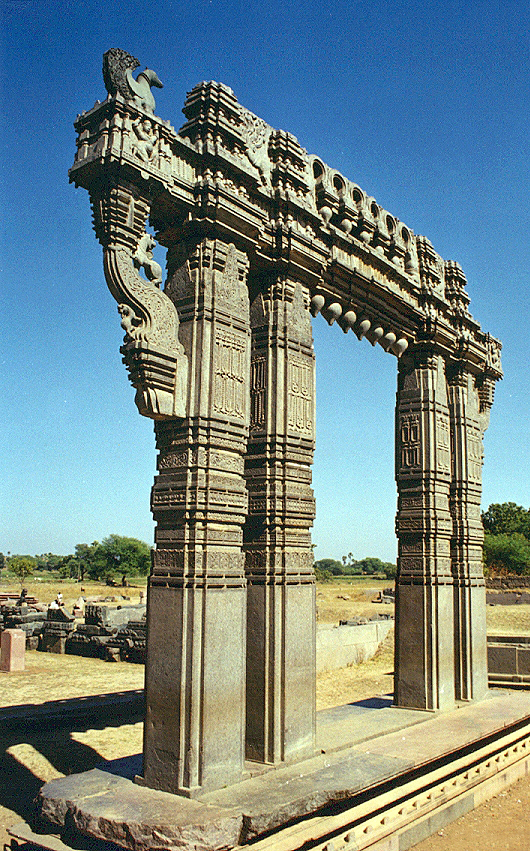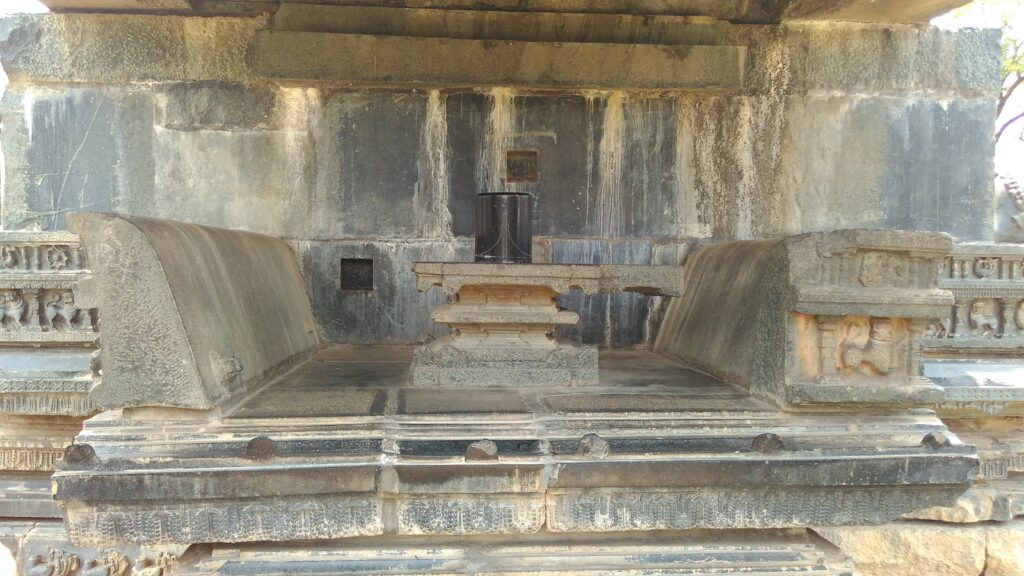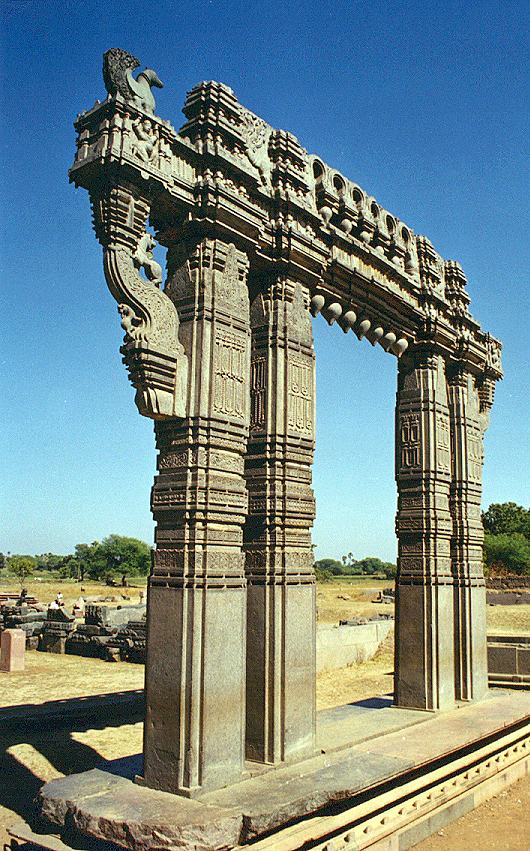Located in the interior regions of Telengana, Warangal Fort is a stunning example of the pride, culture, and ingenuity of ancient Indian civilization. It has withstood centuries of war, glory, decline, and resurgence with its visualization tracing to the strong Kakatiya dynasty. The History of Warangal Fort isn’t only a structure out of stones; it is a novel of South India’s history and heritage.
The Glorious History of Warangal Fort: A Timeless Marvel of South India
The History of Warangal Fort is not just about its architecture; it reflects the rich cultural tapestry of the region.

The Birth of a Stronghold
Foundation by the Kakatiya Dynasty
The History of Warangal Fort is marred by battles but enriched by the tales of valor and resilience.
Warangal Fort has its roots in the 12th century when King Ganapati Deva of the Kakatiya dynasty set its groundwork. Strategically defending the Kakatiya capital, the fort housed the military headquarters and administrative center.
Visitors to the site can explore the History of Warangal Fort through its fortifications and art.
Strategic Location of the Fort
Built at Warangal, some 150 kilometers from Hyderabad, the fort was meant for defense. With hills and rugged ground all around the site, the environment was naturally suited for defense and difficult for invaders to cross.
Throughout the History of Warangal Fort, various rulers have left their mark on this majestic structure.
The Golden Era of the Kakatiyas
The History of Warangal Fort is also about the stories of its inhabitants, particularly Rani Rudrama Devi.
Reign of Ganapati Deva
The fall of the Kakatiyas is a significant chapter in the History of Warangal Fort.
Under Ganapati Deva, the fort started to come to represent political force and artistic genius. He started big building projects and enlarged the defenses.
Rani Rudrama Devi – The Warrior Queen
One of the few female kings in Indian history, Rani Rudrama Devi was maybe the most famous king connected to Warangal Fort. She broke social conventions, put on the armor, and fiercely defended her realm. Her rule was the golden age of the fort.
In the History of Warangal Fort, the Kirti Toranas stand out as iconic symbols of architectural excellence.
Prataparudra – The Last Kakatiya King
After Rudrama Devi, her grandson Prataparudra took over. Despite his efforts, he couldn’t withstand the Tughlaq invasions, which marked the tragic end of the Kakatiya rule in 1323.
The sculptures within the fort tell stories that contribute to the History of Warangal Fort.
Architectural Grandeur of Warangal Fort

Uniquely Carved Gateways (Kirti Toranas)
Warangal Fort is known for its four enormous ornate gates, the famous Kirti Toranas. Crafted from individual granite slabs featuring intricate floral and mythical designs, these archways are architectural wonders of Kakatiya design.
The Kirti Toranas, the magnificent ornamental entrances that still stand tall, are an essential part of any discussion of Warangal Fort. Constructed from a single granite chunk apiece, these four stone archways are engraved with mythological scenes, floral motifs, and divine beings.
Telangana State’s emblem was influenced by these gateways, which are UNESCO-recognized representations of South Indian architecture.
Temples and Stone Artistry
The Qutb Shahis played a role in the History of Warangal Fort, shaping its future in significant ways.
Massive granite blocks were used to construct the fort walls. Beautiful sculptures and inscriptions that each tell a different story of history were also left by the Kakatiyas.
An important place of worship in the past was the now-demolished Swayambhu Shiva Temple. Its sculptures speak of artistic genius even in their state of deterioration. Various deities, animals, and episodes from Hindu epics are vividly portrayed in the carvings on the temple pillars.
The sophisticated craftsmanship of that time period is demonstrated by the use of black granite and complex chiseling techniques—tools and procedures that contemporary historians continue to find puzzling.
Siege and Conquest
Tughlaq Invasion and the Fall of Kakatiyas
The restoration efforts acknowledge the importance of preserving the History of Warangal Fort for future generations.
Mohammad ibn Tughlaq conquered Warangal in 1323. Prataparudra gave up after a valiant defense. The fort’s treasures were taken and it was ruined.
Fort under Bahmani Sultanate
The Bahmani Sultanate seized power following the collapse of Delhi’s authority. They left behind Islamic-style buildings and inscriptions and modified them to fit their system of government.
Warangal Fort’s representation in art and culture highlights the enduring nature of the History of Warangal Fort.
Rule of Qutb Shahi Dynasty
Later, the fort passed to the Qutb Shahis of Golconda, who utilized it more as an outpost than a base of operations.
Tourists visiting the fort often seek to learn more about the fascinating History of Warangal Fort.
Rediscovery and Preservation
Legends add to the allure of the History of Warangal Fort, captivating the imagination of visitors.
Role of Archaeological Survey of India (ASI)
The tales of bravery associated with Rani Rudrama Devi enrich the History of Warangal Fort.
Early in the 20th century, the ASI commandeered the fort. They recorded, dug up, and conserved what remained of the once-glorious fort.
Today, the History of Warangal Fort is preserved through various educational initiatives and programs.
Restoration and Maintenance Efforts
Although most of the fort is in ruins, efforts at preservation go on. Both historical and tourist reasons call for careful maintenance of the Kirti Toranas and Shiva temple.
Symbol of Telangana Pride
Warangal Fort in Telangana Culture
Now a cultural symbol of Telangana’s past is Warangal Fort. It appears in literature, folk music, even official insignia.
Representation in Tourism and Media
The fort is clearly included in Telangana’s tourism initiatives. Documentaries and movie scenes can find great backdrop here.
Legends and Folklores
Mystical Stories About Hidden Treasures
Local stories abound of secret underground chambers loaded with gems and riches. Though unverified, these legends give the fort more of a mystique.
Tales of Queen Rudrama’s Bravery
Rudrama Devi’s bravery—where she single-handedly conducted battles and employed deft war tactics to mislead enemy armies—often romanticizes in folk legends.
The Fort Today
Key Attractions Within the Fort
- Visitors can explore:
- Kirti Toranas
- Ruins of Swayambhu Temple
- Massive stone pillars and battlements
- Stone inscriptions in Telugu and Sanskrit
How to Reach Warangal Fort
- By Road: Well-connected via NH 163
- By Rail: Warangal railway station is nearby
- By Air: Nearest airport is in Hyderabad (approx. 150 km)
Best Time to Visit
Plan your trip between October and March when the weather is pleasant and ideal for exploration.
Cultural Events at the Fort
Kakatiya Festival
Held every year to honor the legacy of the Kakatiyas, this festival includes folk performances, dance, music, and cultural exhibitions.
Light and Sound Shows
With images and narrative, a fantastic light and sound display at night helps to vividly depict the history of the fort.
Educational Significance
Field Trips and Student Visits
The inclusion in the UNESCO tentative list speaks volumes about the significance of the History of Warangal Fort.
The fort is a favorite destination for educational tours, offering students a hands-on history lesson.
The architectural features of the fort illustrate key facets of the History of Warangal Fort.
History Curriculum in Schools
Warangal Fort is featured prominently in Telangana’s textbooks and is studied as part of medieval Indian history.
Warangal Fort’s Global Recognition
UNESCO Tentative List
Warangal Fort is included in the UNESCO tentative list for World Heritage Sites, highlighting its global importance.
In conclusion, the History of Warangal Fort remains a vital narrative in understanding the region’s heritage and identity.
International Attention and Studies
The fort attracts historians and archaeologists from across the world who study its architecture and inscriptions.
images of history of warangal


Conclusion
Glorious history of Warangal Fort is a living museum of South India’s regal past not only a heap of stones. The fort portrays the soul of ancient Telangana from the courageous stories of Rani Rudrama Devi to its magnificent architecture and cultural diversity. Seeing it is like turning pages in a real-life epic that keeps echoing across time.
